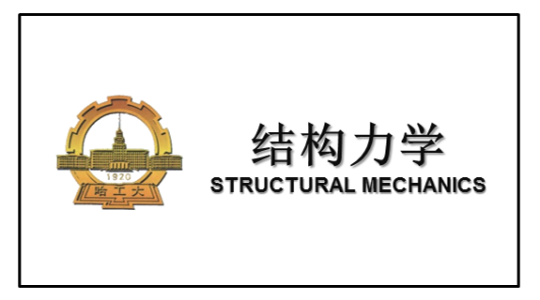
当前课程知识点:Transcending Culture: Culture Studies and Intercultural Communication > Chapter 9 Literature and Paintings > Chapter 9 Quiz > Chapter 3 How Do We Perceive the World?
返回《Transcending Culture: Culture Studies and Intercultural Communication》慕课在线视频课程列表
1. Among the six barriers of intercultural communication, which do you think is most likely to cause miscommunication across culture? Why?
2. What would you do if you saw the Danish woman eating in the restaurant while leaving her baby unattended outside? Why?
3. Besides the examples in the film Guasha Treatment, can you list some other examples to show differences between Chinese and American culture?
4. We live in a society where cases of gender discrimination are not uncommon. Can you give some in which women’s needs have been ignored?
5. How has Chinese culture influenced western culture both in history and modern times?
6. What might be the consequences of ethnocentrism in intercultural communication?
返回《Transcending Culture: Culture Studies and Intercultural Communication》慕课在线视频列表
-1.1 Globalization
-1.2 Global Competence---Being a Global Citizen
--1.2 Global Competence---Being a Global Citizen
-1.3 Understanding Others---Intercultural Communication
--1.3 Understanding Others---Intercultural Communication
-1.4 Understanding Ourselves---To Have China' Stories Retold
--1.4 Understanding Ourselves---To Have China' Stories Retold
-Chapter 1 Why do We Need to Communicate Interculturally?
-Chapter 1 Quiz
-2.1 What is Culture?
-2.2 Metaphors of Culture
-2.3 Characteristics of Culture
--2.3 Characteristics of Culture
-Chapter 2 How do We Understand Culture?
-Chapter 2 Quiz
-3.1 Perception: Definition and Process
--3.1 Perception: Definition and Process
-3.2 Six Barriers in Interculture Communication
--Six Barriers in Interculture Communication
-3.3 Cultural Conflicts and Integration
--3.3.1 Chinese-American Cultural Differences
--3.3.2 American Racial Relations-1
--3.3.2 American Racial Relations-2
--3.3.2 American Racial Relations-3
-3.4 Cultural Diversity, Inclusivity and Cultural Translation
--3.4.1 Cultural Diversity and Inclusivity
-Chapter 3 How Do We Perceive the World?
-Chapter 3 Quiz
-4.1 Language, Thought and Culture
--4.1 Language, Thought and Culture
-4.2 Sapir–Whorf Hypothesis: Linguistic Determinism
--4.2 Sapir–Whorf Hypothesis: Linguistic Determinism
-4.3 Sapir–Whorf Hypothesis: Linguistic Relativity
--4.3 Sapir–Whorf Hypothesis: Linguistic Relativity
-Chapter 4 Language, Thought and Culture: Sapir-Whorf Hypothesis
-Chapter 4 Quiz
-5.1 Communication Overview
-5.2 Verbal Communication
--5.2.1 Verbal Communication -1
--5.2.2 Verbal Communication -2
-5.3 Non-verbal Communication
--5.3.2 Body Language (Section One)
--5.3.3 Body Language (Section Two) and Silence
-Chapter 5 Verbal and Non-verbal Communication
-Chapter 5 Quiz
-6.1 Kluckhohn and Strodtbeck's Value Orientations Theory
--6.1 Kluckhohn and Strodtbeck's Value Orientations Theory
-6.2 Edward Hall’s High Context and Low Context Cultures
--6.2.1 Edward Hall’s High Context and Low Context Cultures -1
--6.2.2 Edward Hall’s High Context and Low Context Cultures -2
-6.3 Hofstede's Six Dimensional Model of Values
--6.3.1 Hofstede's Six Dimensional Model of Values -1
--6.3.2 Hofstede's Six Dimensional Model of Values -2
-Chapter 6 How to Understand Cultural Diversity?
-Chapter 6 Quiz
-7.1 Geographical and Economic Background of Chinese People
--7.1 Geographical and Economic Background of Chinese People
-7.2 The Concept of He (Harmony) in Chinese Culture
--7.2 The Concept of He (Harmony) in Chinese Culture
-7.3 Confucius’ Thought of He (harmony) between Individuals: Ren (benevolence)
--7.3 Confucius’ Thought of He (harmony) between Individuals: Ren (benevolence)
-7.4 Confucius’ Thought of He (harmony) between Individuals: How to Practice Ren (benevolence)
--7.4 Confucius’ Thought of He (harmony) between Individuals: How to Practice Ren (benevolence)
-7.5 The Concept of Tianrenheyi (the unity of Heaven and Man)
--7.5 The Concept of Tianrenheyi (the unity of Heaven and Man)
-7.6 Reversal is the Movement of Tao
--7.6 Reversal is the Movement of Tao
-Chapter 7 Roots and Origins of Chinese Culture
-Chapter 7 Quiz
-8.1 Virtues
--8.1.1 Virtues in Western Cultures
--8.1.2 Traditional Chinese Virtues-1
--8.1.3 Traditional Chinese Virtues-2
-8.2 Core Values in Western Cultures
-Chapter 8 Virtues in Cultures
-Chapter 8 Quiz
-9.1 Chinese Literature
-9.2 Western Literature Orientation
-9.3 Chinese painting: Ink-and-wash painting
--9.3.1 Chinese painting: Ink -and-wash painting -1
--9.3.2 Chinese painting: Ink-and-wash painting -2
--9.3.3 Chinese painting: Ink-and-wash painting -3
-Chapter 9 Literature and Paintings
-Chapter 9 Quiz


